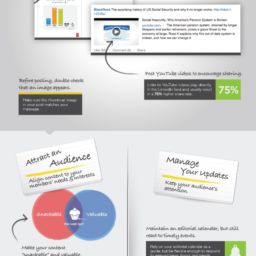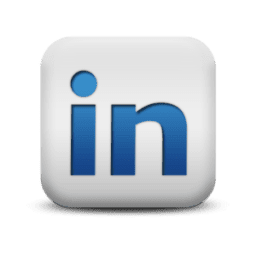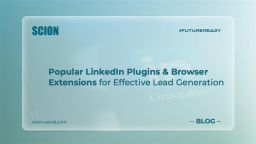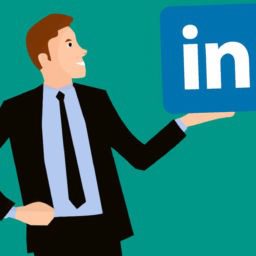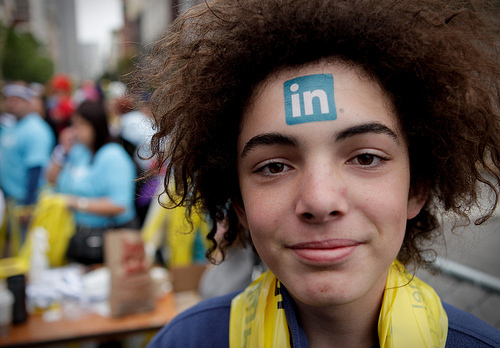
LinkedIn is the social network of business professionals. With more than 150 million members, it can be an extremely important and effective advertising opportunity when used correctly.Here are the tips for mastering Linkedin ads by Hubspot.
Last week, HubSpot teamed up with LinkedIn to host part 2 of a 3-part workshop series on how to master LinkedIn for marketing. The second webinar, hosted by Director of Online Marketing at LinkedIn Scott Engelman and HubSpot CMO Mike Volpe, went into detail on how companies can use LinkedIn ads to drive new leads and customers.
We had an abundance of fantastic LinkedIn marketing questions come in through the #MasterLinkedIn hashtag on Twitter and the webinar chat page. So many, in fact, that we could not possibly answer all of them in a single post-webinar Q&A session. That’s why we wanted to take the opportunity to answer the most frequently asked questions from the second workshop session below. Are you ready to become a LinkedIn Ad Master? Let’s get started!
Answers to the Top 9 Questions About Using LinkedIn Ads to Drive Leads
1) Do you have any tips or best practices for using images in LinkedIn ads?
Use of images in LinkedIn Ads is key to capturing your audience’s attention, especially since social media has reached its most visual stage ever! Do you have that “positive disruption factor?” Pairing your killer copy with eye-catching, colorful images tends to work best, though this certainly varies by company. Your best bet is to run an A/B test with a couple different images, but the same text. If you’re generating more leads or have a higher click-through rate from one of your test images, you’ll know exactly which ad image performs best and you can deactivate the other. When you’re choosing an image, just make sure it’s relevant to the offer you’re advertising.
2) What’s the recommended duration for a LinkedIn ad?
There is no set duration for a LinkedIn ad. Just as with your images, it’s best to test your ads with multiple variations to find your happy place. Run your LinkedIn ads until they start to become less successful, which may turn out to be longer than you think with your stellar copy and captivating visuals! Link your ad to a relevant and valuable offer and you’ll be rolling in the leads.
3) Can I adjust targets once my LinkedIn ad campaign is live?
Yes, you can and should optimize your campaign to improve your results! If you’re not seeing a great deal of engagement with your current ad, try narrowing your target and run it again. You can continue to hone in on your audience until you see the results you were hoping for. LinkedIn allows you to target by industry, job function, company, group, education, location, or age. That’s right, you can target the CEO of LinkedIn or HubSpot with a message targeted at people in CEO positions! If that’s not specific ad targeting, I don’t know what is.
4) Do I need a membership or subscription to use LinkedIn ads?
No, you don’t need a membership or subscription to use LinkedIn ads. All you need is your personal LinkedIn profile, and then you’ll pay for performance from there. Although, for optimal success with mastering LinkedIn for marketing, you might want to consider delving deeper into LinkedIn’s business features. If the goal of your ad is to build brand awareness, you should create a LinkedIn Company Page and drive your ad traffic to your page URL. If you’re looking to generate leads, having a Company Page is important for aligning and leveraging both organic and paid opportunities.
5) Can I test and modify landing pages per campaign?
Yes, you can choose different landing pages per campaign, and even per individual ad. However, you might want to try testing your landing pages per campaign first to help you figure out which ad is working best so you can make changes if needed to the copy or image. Then you can start testing a new variable, like different iterations of landing pages.
And remember, the copy of your ad should accurately reflect the message on your landing page. Are you adding value or solving a problem? Is your ad/offer relevant? Does it positively disrupt the reader, bringing their attention to your ad? If not, make some changes and try your ad again! If you’re still not satisfied with your campaign performance after changing your ad copy and images, try modifying your landing page or advertising a different offer.
6) What information should be included in the personalized landing page?
The personalized landing page should have a brief overview of the offer and how to access it, a form to generate leads, social media sharing buttons, and product or service information. Before you even run your LinkedIn Ad campaign, make sure you’re optimizing your landing pages for success. It doesn’t matter how great your LinkedIn Ad is if your landing page isn’t captivating enough to convert leads..
7) What’s the ideal budget for a LinkedIn ad campaign?
There is no single suggested amount for your budget; this number changes on a company-to-company basis.
You don’t want to run your budget too high initially because you’ll want to know what truly works before spending all your dollars. You also want to be careful with budgeting too low, because if you spend your whole budget in 2 hours you’ll have no idea what the true result of your LinkedIn Ad is; the campaign wouldn’t have had enough time to run its course.
Try starting out with a few hundred dollars and run really good tests. Have your landing pages optimized and ready to go, then hone in on your target. Once you know your audience, you should work on your image and ad copy. Of course, each of these components can be changed mid-campaign, and you’re always able to increase your budget or deactivate campaigns that aren’t working.
8) What are CPC and CPM, and how do you determine which to use?
CPC stands for Cost Per Click, which is where you’re charged up to your maximum bid every time your ad is clicked by a member of your target audience. CPM stand for Cost Per Mille (or rather, Cost Per Thousand Impression), which is where you’re charged up to your maximum bid every time your ad is shown 1,000 times on LinkedIn.
CPC is best for generating leads and engagement on your landing page. If your goal is related to click-through, you’ll only spend your budget when someone physically clicks on your ad. CPM can be used for building brand awareness because thousands of LinkedIn members will see your ad and you can set your maximum budget as low or high as you want for the best results.
9) How do I know the click-through rate (CTR) on LinkedIn ads?
To learn more about the CTR of your LinkedIn Ads, take a look within the ads interface. You will see the exact number of impressions (number of times your ad showed up), clicks, and your click-through rate. These numbers will show you exactly which ads are doing well, and which you’ll need to pull.
LinkedIn wants you to get the most exposure you possibly can with your ads, so in order to be successful you need to you optimize your ads for the best possible click-through rate. And the higher the CTR, the more likely LinkedIn is to show your ad — therefore you really, really, really want to optimize your ads for the highest CTR. If you have multiple ad variations within a campaign, the ad with the highest CTR can be shown more frequently, increasing the chances of someone clicking on your ad. Average CTRs vary by industry, but if your CTR seems low, don’t worry. LinkedIn provides opportunities for your ad to be shown millions of times, which ultimately leads to a smaller CTR.
Blog source : Hubspot


